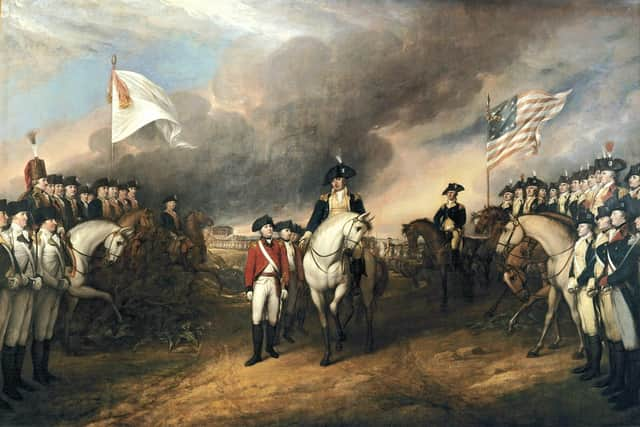The capture of New York reported by the News Letter (1776)
and live on Freeview channel 276
The despatch read: “Headquarters, York Island, September 21, 1776. My Lord, I have the satisfaction to inform your Lordship of His Majesty’s troops being in possession of New York. On the 15th inst, in the morning, three ships of war passed up the North River as far as Bloomingdale, to draw the enemy’s attention to that side, and the first division of troops consisting of the Light Infantry, the British reserve, the Hessian Grenadiers and Chasseurs, under the command of Lieutenant General Clinton, embarked the head of New Town Creek, and landed about noon upon New York Island three miles from the town at a place, called Kipp’s Bay, under the fire of two 40-gun ships and three frigates. The firing of the shipping being well directed and so incessant, the enemy could not remain in their works, and the descent was made without the least opposition.
“Much praise is due to the masters and men of six transports that passed the town the evening the 14th inst, under a heavy fire, being volunteers take troops on board for the more speedy disembarkation of the second division.”
Advertisement
Hide AdAdvertisement
Hide AdGeneral Howe’s despatch continued: “The British immediately took post upon the commanding height of Inclenberg and the Hessians moving toward New York, fell in with a body of rebels and were retiring from Stuyvesant’s line. Some firing ensued, by which a Brigadier-General, other officers, and several men of the rebels were killed and wounded, with the loss four men killed, and eight wounded, on the part, the Hessians.


“As soon as the second embarkation was landed, the troops advanced toward a corps of the enemy upon rising ground three miles from towards the King’s Bridge, having McGowan’s Pass in their rear; upon which they immediately retired to the main body of their army upon Morris’s Height.
“The enemy having evacuated New York soon after the army landed, a brigade took possession of the works in the evening.
“On the 16th in the morning a largo party of enemy having passed under cover at the woods near the advanced posts of the army, by way of Vandeswafer’s Height the 2nd and 3rd battalions of Light Infantry, supported the 42nd Regiment, pushed forward, and drove them back to their entrenchments, from whence the enemy, observing they were not in fore, attacked them with near three thousand men which occasioned the march of the reserve, with two field pieces, a battalion of Hessian Grenadiers, and the company Chasseurs, to prevent the corps engaged from being surrounded; but the Light Infantry and 42nd Regiment, with the assistance the Chasseurs and field pieces, repulsed the enemy, with considerable loss, and obliged them to retire within their works.
Advertisement
Hide AdAdvertisement
Hide Ad“The enemy loss is not ascertained, but from the accounts of deserters it is agreed that they had not less than 300 killed and wounded, and among them a colonel and a major killed. We had eight officers wounded, most of them very slightly; fourteen men killed, and about seventy wounded.”
Pressing Sailors – a report dated Portsmouth, October, 28, 1776: “Last night press warrants were sent down here, and it’s expected there will be a warm press for sailors. We are informed that there are 10,000 sailors wanted for immediate service.”
It added: “The press now on foot is designed to man a fleet of observation. France has been so busy in preparing a powerful navy, that it was highly necessary that we should be ready in case of an attack from her.”
A Dublin Celebration, a reported dated Dublin, November 5, 1776: “Yesterday being the anniversary the birth and landing of the late King William, glorious and immortal memory, His Excellency the Lord Lieutenant had Levee at the Castle, at which were present the Lord and Sheriffs, attended the City Regalia, after which there was a grand procession of several of the Nobility and Gentry from the Castle to College Green, round the Statue of King William, as also about Stephen’s Green; the great guns in His Majesty’s Park, the Phoenix, were fired, and answered volleys of small arms from the Barracks.”